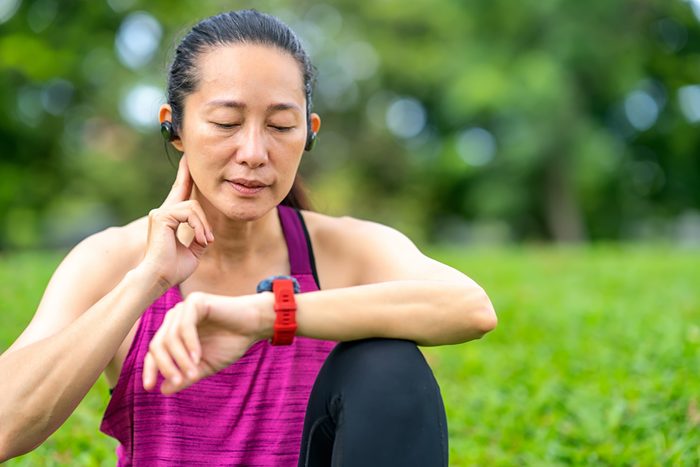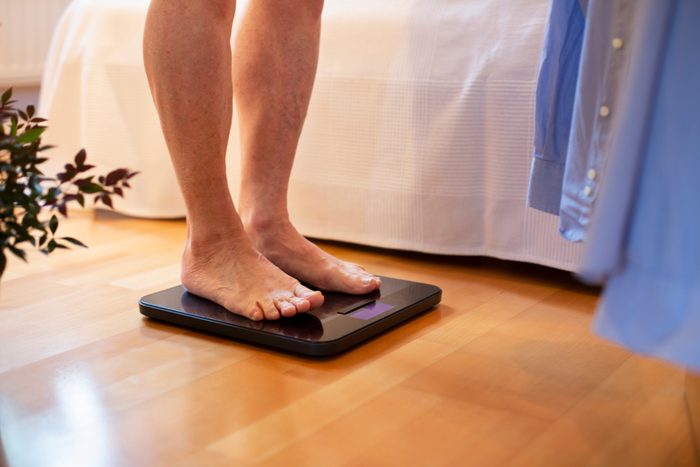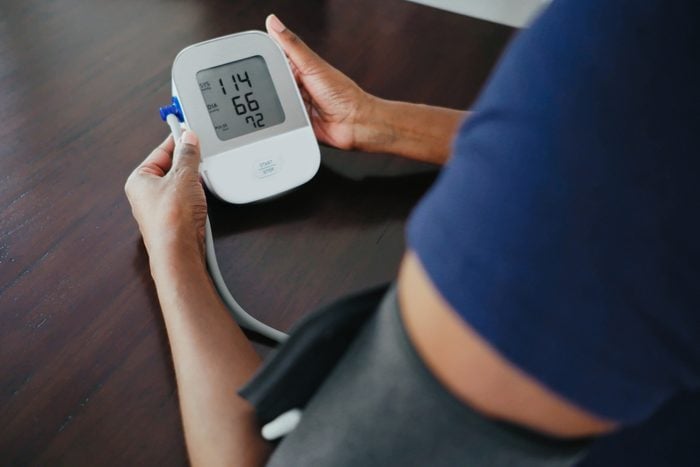
According to the American Heart Association, one person dies of cardiovascular disease (CVD) every 34 seconds, which means that by the time you’re done reading this paragraph, one American will have died of CVD, which includes atherosclerosis, heart attack, stroke, heart failure, arrhythmia and heart valve malfunction.
Melody Hermel, MD, is an integrative cardiologist at United Medical Doctors in San Diego, California, and her approach to cardiac care combines traditional and alternative approaches. Dr. Hermel empowers patients to create custom care plans—combining nutrition, exercise and stress reduction strategies—to prevent and treat heart disease.
February is American Heart Month, and it’s a good time to evaluate your heart health and check what you have in your heart health toolkit. Health decline often happens gradually, and it can be easy to miss the signs and symptoms. Because it’s better to prevent CVD instead of treating it, Dr. Hermel has four at-home tests you can use track your heart health.
The 4 Best Habits to Lower Your Heart Disease Risk, from a California Cardiologist

Test your ability to perform heavy housework
Staying busy with chores—everything from mopping to making beds to taking out the trash—is good for your overall heart health. For example, if you stop carrying a laundry basket up and down the stairs for a short period of time, you might find that you’ll lose your ability to do so. “If you’re seeing a cardiologist to determine your pre-operative risk for surgery, part of the assessment will include questions about your physical fitness,” Dr. Hermel says. “You may be asked if you can climb two flights of stairs, do gardening, scrub the floors etc. as an assessment of your exercise tolerance. When tasked with household chores, remember you are doing more than tidying up; you are also tracking your heart health.”
If you find that heavy housework leaves you feeling weak, exhausted or worse—unable to complete the task—you should see a cardiologist for diagnostic testing. “Exercise tolerance measured in metabolic equivalents is a good predictor of future major adverse cardiovascular events,” Dr. Hermel says.

Monitor your weight and your waist circumference
We know excess belly fat is unhealthy and obesity increases the risk of heart muscle injury, yet Americans keep gaining weight. The Centers for Disease Control and Prevention (CDC) reports that pre-pandemic obesity rates in the United States were almost 42%, which has been steadily rising over the past forty years.
A Johns Hopkins cardiologist predicts that by 2030, 20% of adults may have heart failure. This is due in large part to the fact that obesity increases the risk of heart failure. “Obesity is directly correlated with elevated cholesterol, type 2 diabetes, high blood pressure, irregular heart rhythm (such as atrial fibrillation), heart failure, and sleep disorders,” Dr. Hermel says. “Moreover, obesity leads to increased cardiovascular disease mortality independent of other risk factors.”
Because belly fat is a risk factor even in healthy-weight individuals, it’s important to measure the ratio of waist circumference to height or waist-to-hip ratio as a predictor of cardiovascular health. This is easy to do at home with waist-to-height or waist-to-hip ratio calculators.
If heart disease runs in your family, it’s essential to take extra steps toward heart health, but it’s also important to remember that our genes are not a health sentence. “It is empowering to know that healthy nutrition and exercise can contribute significantly to weight loss and this can lower cardiovascular risk even in the face of significant genetic risk factors for heart disease,” Dr. Hermel says.

Check your blood pressure
People tend to monitor their blood pressure only after they’re diagnosed with high blood pressure, but because prevention and early screening are key, the best time to start checking your blood pressure is when it’s still within normal range. “High blood pressure is one of the biggest causal risk factors for heart attacks, heart failure, heart valve disease, aortic syndromes, strokes, chronic kidney disease, dementia etc.,” Dr. Hermel says. “Use an at-home cuff to keep tabs on your blood pressure and bring the cuff to your doctor’s office to calibrate with the readings the doctor takes.”
Taking your blood pressure at home can be tricky, but the American Heart Association offers a guide on how to do it right. “Check your blood pressure after sitting for 5 minutes, at a time when you are not overly stressed, not after eating or exercising and not after consuming caffeine,” Dr. Hermel advises. “Sit with your back against a chair, feet uncrossed on the ground, arm supported at heart level, and palm up.” She also says you shouldn’t talk while you check your blood pressure, and you should always take two readings. “Take a reading but don’t write it down,” she says. “Wait a minute and then recheck your blood pressure and record the second reading.”

Check your pulse
It’s also important to keep track of your pulse at home. “You can self-monitor your pulse manually or with a blood pressure cuff or a smartphone, watch or ring,” Dr. Hemel says. “Track the rate in beats per minute and palpate for any irregularity to the rhythm.”
“Projected to affect 12.1 million people in the United States by 2030, atrial fibrillation (AFib) is the most common abnormal heart rhythm which causes an irregularly irregular pulse and fast or slow heart rates,” Dr. Hermel says. “When it goes untreated, AFib is associated with strokes (often large and debilitating), poor health outcomes, reduced quality of life and death.” One of the biggest problems with AFib is that 30% of cases are asymptomatic and go undiagnosed. In addition to checking your pulse, it makes sense to familiarize yourself with the symptoms of AFib, as listed on the CDC‘s website:
- Irregular heartbeat
- Heart palpitations (rapid, fluttering, or pounding)
- Lightheadedness
- Extreme fatigue
- Shortness of breath
- Chest pain
Here are risks factors for AFib, according to the CDC:
- Advancing age
- High blood pressure
- Obesity
- European ancestry
- Diabetes
- Heart failure
- Ischemic heart disease
- Hyperthyroidism
- Chronic kidney disease
- Moderate to heavy alcohol use
- Smoking
- Enlargement of the chambers on the left side of the heart
Of course, The Healthy @Reader’s Digest’s Medical Review Board co-chair Latoya Julce emphasizes that in addition to monitoring your heart health at home, to ensure you’re in tip-top shape it’s crucial to stay on top of a physical appointment with your primary care doctor once a year.
For more health tips, follow The Healthy on Facebook, Instagram, and Twitter. Keep reading:

